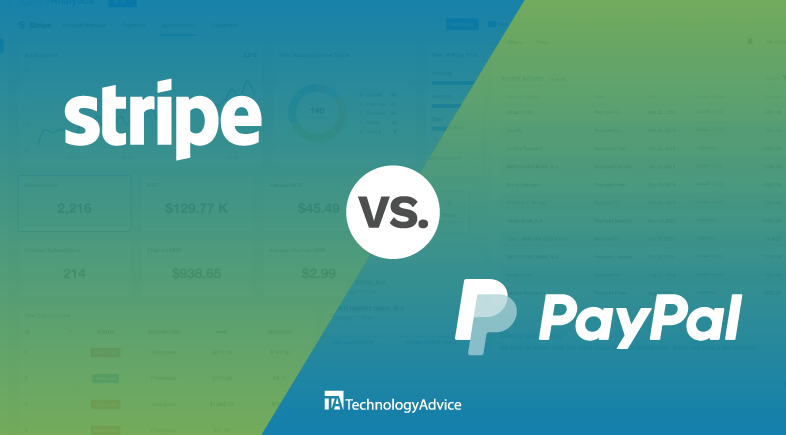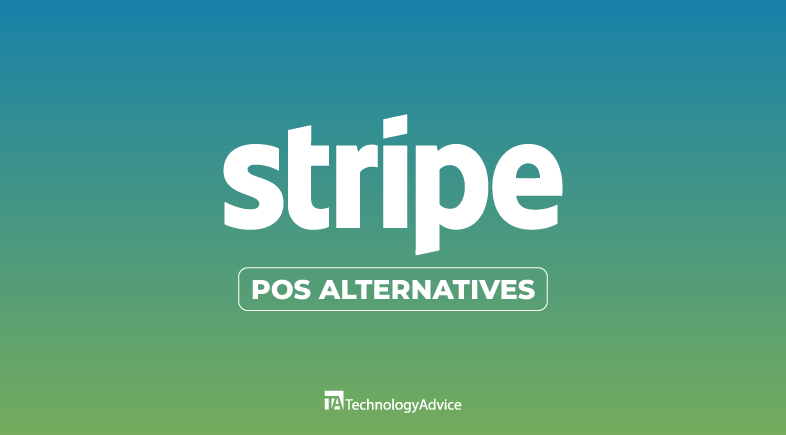Key takeaways
A subscription payment gateway makes recurring billing possible by accepting various payment methods, saving customer payment information, and integrating with popular billing platforms. This guide explores the features and capabilities of subscription payment services.
What is subscription payment processing?
Subscription payment processing is a payment service designed to manage recurring payments for subscription-based businesses. When paired with online billing software, it automates most tasks related to recurring payment collection, such as secure card data storage, payment pre-authorization, and embedding payment links on recurring invoices.
Payment processors that support subscriptions come with a payment gateway that not only captures, authenticates, and sends the customer’s information for payment processing — it also performs the additional function of retrieving payment details from the card vault to automatically charge the customer’s account every billing cycle.
Types of subscription payment models
Subscription payment models refer to the various ways customers are charged for a subscription service. Factors like industry and products determine which subscription model is best for each business type.
- Fixed recurring: Subscribers pay a fixed monthly, quarterly, semi-annual, or annual fee for a product or service at regular intervals. Example: Netflix streaming service
- Ramp: Subscribers pay an increasing amount for different levels of service. This model is often used to gate more advanced features with higher subscription fees as seen in most business software subscription plans.
- Quantity-based: Subscribers pay higher fees based on the number of users that access the service. B2B SaaS companies refer to these as licensing fees for the use of their software.
- Usage-based: Subscribers only pay for what they use. This model is commonly used by utility providers (electricity, water, gas), some marketing platforms (Square Marketing), and digital services like Amazon Web Services.
- One-time: Subscribers only pay a one-time fee for unlimited use of a product or service, such as anti-virus software. Another example is a self-hosted or on-premise POS system that charges a one-time fee for the software and hardware package.
- Pre-payments: Subscribers pay in advance as a credit for future use of services or purchases. This is commonly found in the form of retainers for law firms and ad agencies.
How to process subscription payments
The best payment processor for subscriptions uses a secure payment gateway to start the process of collecting subscription payments. It captures, stores, authenticates, and eventually communicates the customer’s payment information to financial institutions. And while there are a variety of payment methods that differ in details, the role of the payment gateway is essentially the same.
Step 1: Customer chooses and signs up for one of the subscription plans on your website, filling out a subscription form.
Step 2: Customer chooses a payment method and (card, ACH, bank transfers, digital wallet) provides their payment details, and agrees to your payment policy, typically by clicking on a box on the form stating that the information will be kept on file for automatic payments.
Step 3: The payment processor validates the payment information with fraud prevention tools, such as IP and address verification. Once validated, the payment details are encrypted and stored in the secure card vault.
Step 4: Every billing cycle, the payment processor automatically charges the stored payment details. The payment processor sends the transaction details to the relevant financial institutions for authentication and approval.
Step 5: Once approved, a digital receipt or post-transaction invoice, which contains the subscription details and payment information, is sent to the customer’s elected email address. The receipt will also contain a link where customers can cancel, renew, or change their subscription.
If the payment is rejected, a notification email will be sent to the customer along with a request to provide a replacement payment method via a link to their account. The system will then repeat step 5 and attempt to charge the new payment method.
Step 6: Once the payment is successful, the proceeds, net of the transaction fees, are sent to the user’s merchant account where they stay until the funds are transferred to the linked business bank account.
Now that you know what subscription gateways are and how to process payments with one, let’s explore some of the top options on the market.
Top subscription payment gateways
While there are many payment processors in the market that offer subscription payment gateways, some stand out for their versatility and overall value for money.
Below are our top recommended subscription payment gateway providers for businesses that require a payment subscription service.
Best subscription payment gateways compared
Company
Our score (out of 5)
Fee Structure
Volume Discounts
Subscription Platform Integration

Helcim
4.48
Interchange plus
Automated, Level 2 & 3 B2B optimization
Helcim subscription management service

Stax
4.42
Wholesale interchange
Volume-based subscription
Stax Bill subscription platform
Stax Pay subscription management service

Stripe
4.32
Flat rate, zero monthly fee
Interchange plus by request
Most subscription management software

Braintree
4.16
Flat rate, zero monthly fee
Interchange plus by request
Most subscription management software

Square
4.09
Flat rate, zero monthly fee
Interchange plus by request
Square subscription management service

Helcim: Cheapest subscription payment processing for growing businesses and B2Bs
Overall Score
4.48/5
Pros
- Free Helcim subscription management service
- Interchange optimization
- Automated volume-discounts
Cons
- Limited business software integration
- Add-on fees for Amex transactions
- Exclusive to Helcim subscription management service
Read more: Best credit card processing companies

Stax: Best for large businesses looking for scalable native billing software
Overall Score
4.42/5
Pros
- Offers proprietary billing software that’s compatible with third-party payment processors
- Wholesale interchange-plus rates
- Advanced customization options
Cons
- Payment gateway exclusive to Stax Pay
- ACH payments are an add-on
- Next-day funding for a fee
Read more: Cheapest credit card processing solutions

Stripe: Best for compatibility with subscription platforms
Overall Score
4.32/5
Pros
- Instant approval and no monthly fees
- Compatible with most billing platforms
- Machine learning-based fraud protection
Cons
- Takes time to set up
- Limited virtual terminal features
- Requires a developer to make the most out of the platform
Read more: How to accept payments online

Braintree: Best for nonprofits and accepting PayPal payments
Overall Score
4.16/5
Pros
- Developer-based integration tools
- Full PayPal payment method integrations
- Sandbox account for free trial
Cons
- Requires some coding skills to customize
- Largely depends on PayPal for simple integrations
- Requires third-party integration for invoicing

Square: Best for small and new subscription businesses
Overall Score
4.09/5
Pros
- All-in-one business ecosystem
- Waived monthly chargeback fees
- Developer-based customization for enterprise businesses
Cons
- Exclusive to Square billing
- Base transaction rates ideal for small businesses
- Limited customer support hours
Read more: Best credit card payment apps
Subscription payment processing best practices
Transactions processed through recurring payment gateways are charged higher processing rates than most traditional one-time transactions. This is primarily due to the greater risk of fraud and chargeback claims associated with storing payment data and pre-authorizing remote payments.
To manage the risk and help keep processing rates low, users can implement these best practices and optimizations.
Maintain Payment Card Industry (PCI) compliance
PCI compliance is a requirement by card networks for all businesses that accept credit card payments. This involves regular testing of a merchant’s payment processing system against a set of 12 data security standards (DSS). Subscription-based businesses, in particular, should pay attention to PCI-DSS because regulations around storing customer payment information are strongly emphasized.
Maintaining PCI compliance is tedious work for business owners to do on their own. That said, this is easily manageable by choosing a PCI Level 1-compliant payment gateway provider. These providers have the technology to encrypt and tokenize customer payment data when stored on their own server, so it can easily take on the responsibility of PCI compliance on your behalf.
Document your customer’s payment authorization
This is a non-negotiable task. Remote payments, especially recurring ones for a subscription payment service, are highly susceptible to chargeback claims. Documenting a customer’s payment authorization essentially protects businesses from complaints of unauthorized charges from a customer’s source of funds. This can be in a physically signed document saved in the customer’s profile or an online signup form completed by the customer and recorded on your website.
Create a clear and transparent payment policy
A subscription management platform should have the ability to assist users with creating a payment policy. That said, the content is entirely up to the user, and transparency means ensuring that all necessary information is included, such as:
- Upgrading and downgrading subscriptions
- Terms and conditions for the subscription plans
- Cancellation and refund policies
- All relevant fees other than the monthly subscription cost
- Guidelines in the event of failed payments
In addition to a detailed document, shortened versions displayed on and around the website can be helpful for customers who find a lengthy payment policy too time-consuming to read. This may be in the form of a payment terms section in the FAQs or a short bulleted list of important terms on the pricing page. If you launch payment policy updates, be sure to highlight these prominently on your website and send out email notifications to all your current subscribers.
Make your billing cycle customer-friendly
When possible:
- Provide customers with the option to set their payment dates
- Set a manageable payment frequency based on the subscription cost
- Create and send out automated email notifications at least a week before the billing cycle
Doing these can potentially prevent payment failures due to insufficient funds, not to mention leave the customer with a good impression.
Use an account updater
The account updater is a payment service feature every business that accepts recurring payments should have. By default, payment details provided by the customer at the time they signed up for a subscription do not change unless they voluntarily access their account and manually update the information. Unfortunately, this setup does not account for when cards expire or bank accounts are closed and can cause failed payments.
With an account updater, the payment processor has access to a central account updater database. The database allows banks to send new information on card renewals and replacements so that customer payment information will be updated automatically.
Provide alternative payment methods
While credit card payments are a popular online payment method, some customers may prefer other payment modes, such as bank transfers, ACH, and digital wallets. Look for the latest statistics showing the preferred payment methods of different age, gender, and income brackets, then find where your target customers fall to determine whether you need to adopt alternative payment options.
Read more: Our roundup of best merchant services providers





